Reduce labour by up to 20% in the first four months
Investments in practical housing pay off. Calf rearing is a labour-intensive part of running a dairy farm. Proper calf rearing requires attention and care. Yet at many farms, it's possible to greatly reduce the amount of work. Labour savings can be as high as 20%, and without compromising quality! These reductions centre on using the right materials and ensuring the calf housing is cleverly designed and positioned at the farm.
By using good quality hutches with the proper design and accessories (buckets, teats, troughs and so on), it's possible to reduce labour by up to 20% during the four-month-long calf rearing period. These labour savings extend to a variety of aspects: easily moving and cleaning the hutches, adding fresh straw easily, ensuring plenty of light and a convenient water supply. Permanently-stocked feeders, being able to provide milk easily and convenient access to the calf also contribute to reducing the amount of work involved.
The correct location
The best place to rear a healthy calf is outdoors. Fresh, pathogen-free air and totally clean surroundings right after birth – these are the optimum starting conditions for successful calf rearing. While housing calves indoors can be a pleasant option in terms of working conditions, it is virtually impossible to realise those ideal conditions indoors. Rigorous, thorough cleaning and disinfecting of the hutches is difficult to achieve indoors, and the presence of older calves is inevitably a source of pathogen exposure.
When setting up calf housing outdoors, there are a number of important basic considerations. Place the hutches in an easily accessible location where you will walk by them regularly, so that you (and/or your workers) can effectively keep an eye on the young animals. At the same time, you should make sure the hutches are well away from the vents of older animals’ housing, and are not along a path where the dairy cows will pass by them on their way to the pasture each day. The likelihood of pathogen exposure is high in these areas. You should also try to create a place to prepare the calves’ milk, and clean and store accessories, relatively near the housing. This is to ensure short walking distances and maximum hygiene. Be sure to put on clean boots and clean overalls before visiting the calves; whenever possible, avoid going back and forth between areas. This will help limit the spread of pathogens to a minimum.
Disinfect the brush
While cleaning and disinfecting the buckets and teats every day may be time-consuming, it is absolutely vital. Remember: nursing a sick calf takes even more time. One tip for reducing the chance of spreading pathogens is to avoid sharing buckets. To start, permanently match the buckets to the hutches by numbering them. Even better: keep the buckets by the corresponding hutches at all times and clean and disinfect them there. You can use hot water from the Milk Taxi, for instance. First, do a round to give the calves their milk, followed by a second round to clean the buckets. You should then store the bucket hanging upside down so no water is left in it. It's also important to disinfect the brush used to clean the buckets after every bucket. If you don't, the brush could be the vector by which pathogens spread from one bucket to the next.
Less labour when cleaning
A great deal of work can be eliminated by choosing hutches that are easy to move and simple to clean. The CalfOTel® hutches have been specially constructed with these aspects in mind. They are conveniently collapsible and can be easily lifted using a front loader or telehandler. This makes it possible to shift the hutch to the dung heap, for instance, and clean and disinfect it there. Afterwards, the hutch should be returned to a clean, dry spot where no calves have been housed in recent weeks; by doing so, you can ensure 100% clean starting conditions for the next calf. What's more, the polyester CalfOTel® hutches are equipped with a special coating that gives them a non-porous surface – with no place for pathogens to hide – and makes them a snap to clean.
Permanently-stocked feeders
The CalfOTel® AdLibFeeder makes it possible to provide a calf with enough concentrated feed to last them a longer period, at one go. This saves a great deal of work. The feeder has been designed in such a way that the stored feed is protected from rain, insects, birds and rodents. As a result, the feeds stays clean and fresh for the entire calf-rearing period. The easy-to-calibrate dosing mechanism allows you to control the feed supply, and because the feeder is manufactured as a single seamless unit, it is easy to clean as well.
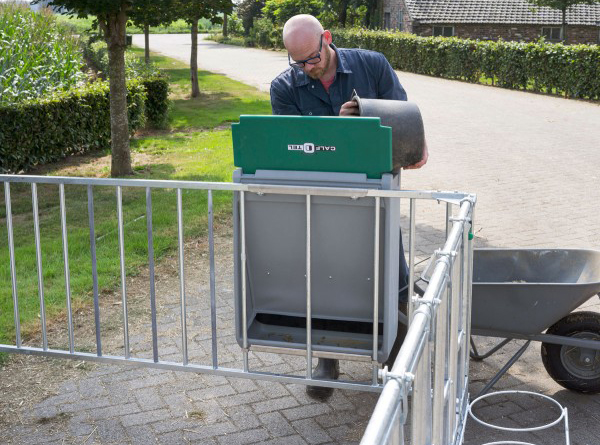
Provide hay and dry feed at the same time
The practical and labour-saving CombiFeeder from CalfOTel® allows you to provide pellets and hay at the same time in a single unit, while also protecting the feed from rain. The trough for pellets is at the bottom, with a hay rack on top. The removable feeding dish makes it easy to refill or clean the feeder.
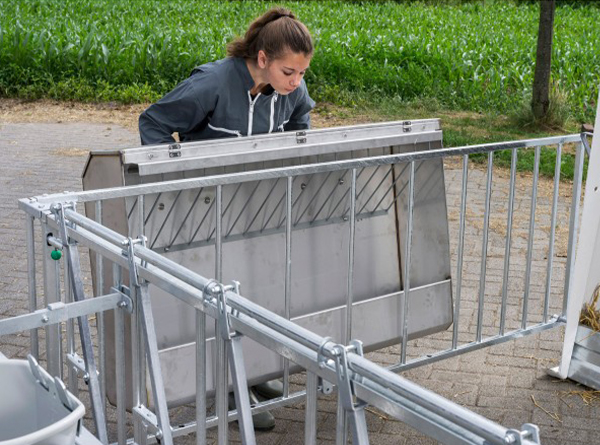
Greater ease-of-use thanks to Hybrid
With our CalfOTel Hybrid, we've taken a further step towards achieving optimum user-friendliness. The collapsible awning makes it possible to stay dry while working on rainy days. The removable partitions also eliminate the need to move calves in the interim. Due to the fence construction, it's possible to enter the hutch while the calf is drinking without disturbing the animal.
Save time and make work more enjoyable
There are two facets to reducing labour: Saving time and making the work more enjoyable. At CalfOTel, we take both of these facets into account in everything we do. We consider them when developing our products, of course, but also in giving advice on how to use those products at dairy farms.
By deploying CalfOTel housing and accessories, a farm with 100 dairy cows can save up to 80 hours of labour per year. That is a savings of nearly fifteen minutes a day. More than that, the easier-to-clean housing and feeding convenience set the stage for a successful and enjoyable calf rearing process.

Share this message
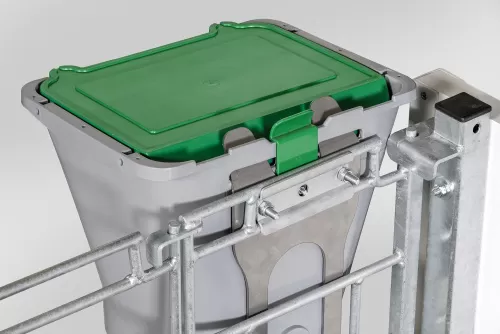
Special offer! CalfOTel Milkfeeder
CalfOTel closes the year 2020 with a special offer! Until the end of the month December you receive a discount on the new CalfOTel Milkfeeder.

CalfOTel Open Top Premium wins Innov’SPACE!
CalfOTel has won a 2020 Innov’SPACE for the Open Top Premium Single and Duo! Our colleague Jean Bernard Béranger received the award yesterday....
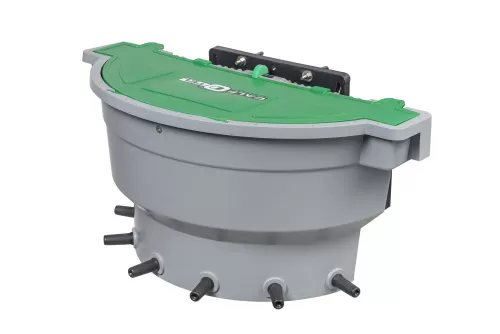
New products!
CalfOTel launches not one but three new products, among which a new line for indoor accomodation. These calf pens are suitable for dairy farmers who want to keep calves indoors or under a roof. The products were developed on the basis of...
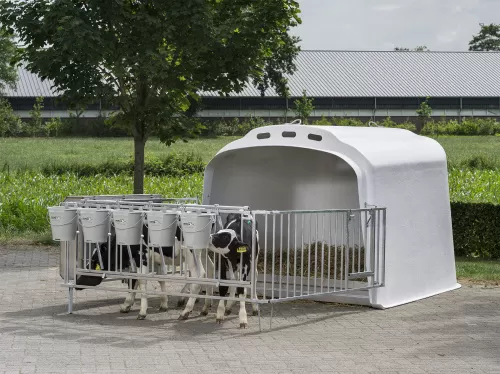
More growth and health in outdoor housing
Thorough calf rearing is essential for good performance as a dairy cow. With a high feeding regime and an all-in, all-out housing in small, fixed groups, calves perform best. For example, research by Dairy Campus/WUR with 224 breeding calves in...
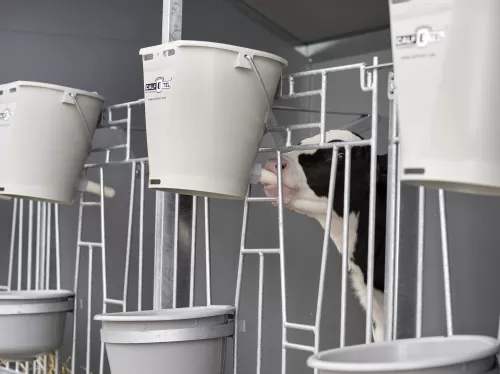
Hand-feeding better for calf’s health
Hand-feeding a calf is labour-intensive. You have to mix water and milk powder, lift buckets and then fill the teat buckets several times a day. An automatic milk feeder can save you a lot of work. However, this study has shown that calves that...
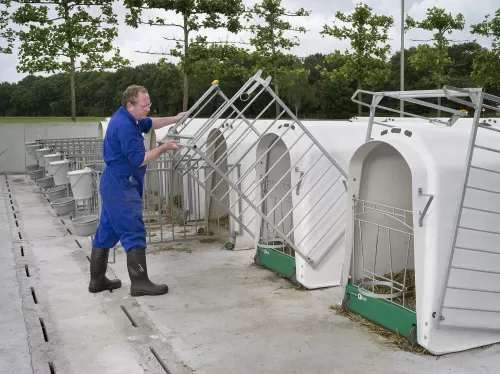
The CalfOTel systems save labour
The calf-rearing period, between 0 and 4 months, demands more labour than any other time. You can save approximately 20% on this labour by using solid hutches with the right set-up and accessories. During the development of our calf housing, we...
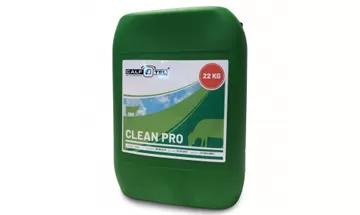
Cleaning calf hutches an easy job with CleanPro foaming product
A calf is continuously surrounded by micro-organisms. Only a few of those are true ‘pathogen’ and can, therefore, cause diseases. In order to keep these pathogens away, we aim for the highest possible level of hygiene. ...
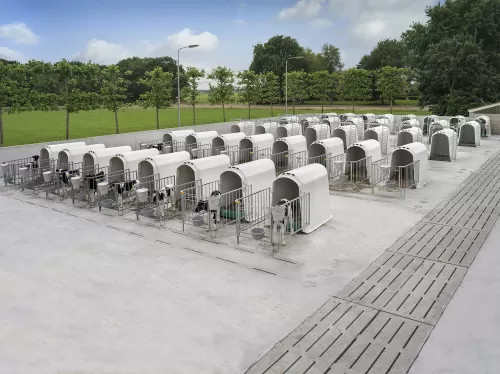
1,000 grams of growth with correct nutrition and housing
Calves that are fed and housed well can grow by as much as 1,000 grams per day during the milk period. It is not just the cattle farmer’s awareness and efforts that play a major role, so do the right housing and approach.
